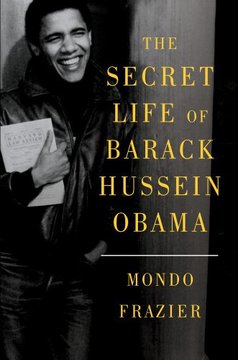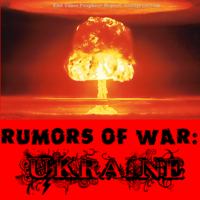
Present-day anti-smoking forces are following the same blueprint that Adolph Hitler used in his hopes for a smoke-free Nazi Germany. Smoke Nazis' quest for control and regulatory power closely mirror the original National Socialists of 1930s Germany.
We list the Nazi anti-smoking accomplishments alongside of those of the Smoke Nazis.
It reveals where the Health Nazis are headed.

* The Nazis banned tobacco advertising and financed huge public relations campaigns to propagandize people into giving up smoking.
In April 1970, Congress passed the Public Health Cigarette Smoking Act banning the advertising of cigarettes on television and radio starting on January 2, 1971. The Virginia Slims brand was in the last commercial shown, with "a 60-second revue from flapper to Female Lib", shown at 11:59 p.m. on January 1 during a break on The Tonight Show.
* The first modern, nationwide tobacco ban was imposed by the Nazi Party in every German university, post office, military hospital and Nazi Party office, under the auspices of Karl Astel's Institute for Tobacco Hazards Research, created in 1941 under direct orders from Adolf Hitler himself. Major anti-tobacco campaigns were widely broadcast by the Nazis until the demise of the regime in 1945.
In 1975, the U.S. state of Minnesota enacted the Minnesota Clean Indoor Air Act, making it the first state to ban smoking in most public spaces. To begin with, restaurants were required to have No Smoking sections, and bars were exempt from the Act. As of 1 October 2007, Minnesota signed into law a ban on smoking completely from all restaurants and bars throughout the state. This is the Freedom to Breathe Act of 2007. In 1990, the city of San Luis Obispo, California, U.S.A. became the first city in the world to ban indoor smoking at all public places, including bars and restaurants.
There are now 35 states with some form of smoking ban on the books.

* A ban on smoking in private vehicles was called for.
Gain for anti-smoking movement: No puffs allowed in private vehicles
BERKELEY, CAL--Some hospitals have banned smoking inside a person's own vehicle if it's on hospital property, a step viewed as logical by the anti-smoking movement but repugnant to its critics.
* The term "passive smoking" (Passivrauchen) was coined by the Nazi Anti-Tobacco League. Its author, Fritz Lickint, offered no supporting evidence to claim that smokers poisoned everyone around them, while also stating that drinking coffee caused cancer.
Fact: In 1995 The Congressional Research Service (CRS) released a review of the EPA report [on second-hand smoke.] The CRS was highly critical of both the EPA's methods and conclusions."
Fact: According to the CRS "The studies relied primarily on questionnaires to the case and control members, or their surrogates, to determine EST [Environmental Tobacco Smoke] exposure and other information pertinent to the studies.
* The Nazi anti-smoking crusade was unleashed with the help of manufactured junk science on behalf of the medical and health establishment, one such example being that smoking caused "spontaneous abortions" in pregnant women.
Cherry-picked Science on Secondhand Smoke
In a recent paper entitled “Sorting Out Junk Science,” published by the American Council on Science and Health, a toxicologist notes that she most often sees junk science when a regulatory agency “puts political objectives ahead of scientific integrity.” It occurs, for example, when an agency adopts a political position and then “selectively seeks data that support and further that position, even to the point of actively excluding any results which are inconsistent with that position.”
Results that are inconsistent with the desired position (banning smoking) are simply excluded.
* Hitler attempted to price out smoking for Germans, levying huge taxes on cigarettes.
"On June 3, the state cigarette tax increased by $1.25, to $2.75. With the $1.50 city tax, the total retail price for a pack is now the highest in the country—around $9."
--NY Magazine: The Unsmokables
"More states that haven't (raised taxes) should do so. This will stop tax-skirting smuggling of cigarettes from low-tax to high-tax states and discourage youth smoking," Todd said.
--American Cancer Society: How to Fight Teen Smoking

Despite the Nazi propaganda crusade against smoking, tobacco sales increased in Germany, leading some history professors to hypothesize that smoking was an act of cultural resistance against fascism, until the late 1930's after smoking was banned in most public buildings and tobacco sales rapidly declined.
This war against smoking is being waged by the same types who were responsible for Prohibition. Smoke Nazis come in different flavors.
For some, it's a misguided attempt to remake society into a "better place"--and, of course, they get to define "better". The urge to feel morally superior to evil smokers is practically overwhelming for this breed of Smoke Nazi.
For others, it's all about control: nothing can quite duplicate the feeling of telling others what to do for this brand of Smoke Nazi. They are most like the Nazis of the 1930s: it was also about control for them as well.

If you smoke, then it's open season on your personal freedom of choice. Smoke Nazis had good teachers: the original Nazis had no use for choice; they wanted smoking gone at any price. However,smokers can take heart: they won't be the last to be singled out by the Health Nazis.
Sadly, many non-smokers stand on the sidelines, while their neighbors, friends and family are systematically demonized. They wrongly think that they have no side in this fight. They don't smoke, but smoking doesn't bother them, so they don't care who wins.
These non-smoking bystanders are dead wrong: it will affect them, sooner or later.
If smoking were outlawed (as happened to marijuana in the 1930s) completely, the Smoke Nazis won't stop their crusades to remake the world in their image. The overweight, the too-heavily perfumed, the junk-food eaters, the wearers of leather shoes and coats: these are next on the list of behaviors that some people find offensive. It's in the nature of the people calling the shots.
Once a Smoke Nazi tastes blood, they become insatiable.
by Mondoreb
Sources/images:
* Tobacco advertising
* Today's Anti-Smoking Purge Is Borrowed From The Nazis, Smoking is healthier than fascism
* infowars
* tommcmahon
*free-vegetarian.thumbnail.jpg"> myconfinedspace
* Smoking ban
* davehitt/facts
* Junk Science
* How to Fight Teen Smoking
* Higher cigarette taxes have smokers gasping






























OSHA also took on the passive smoking fraud and this is what came of it:
ReplyDeleteReference Manual on Scientific Evidence: Third Edition
This sorta says it all
These limits generally are based on assessments of health risk and calculations of concentrations that are associated with what the regulators believe to be negligibly small risks. The calculations are made after first identifying the total dose of a chemical that is safe (poses a negligible risk) and then determining the concentration of that chemical in the medium of concern that should not be exceeded if exposed individuals (typically those at the high end of media contact) are not to incur a dose greater than the safe one.
So OSHA standards are what is the guideline for what is acceptable ''SAFE LEVELS''
OSHA SAFE LEVELS
All this is in a small sealed room 9x20 and must occur in ONE HOUR.
For Benzo[a]pyrene, 222,000 cigarettes.
"For Acetone, 118,000 cigarettes.
"Toluene would require 50,000 packs of simultaneously smoldering cigarettes.
Acetaldehyde or Hydrazine, more than 14,000 smokers would need to light up.
"For Hydroquinone, "only" 1250 cigarettes.
For arsenic 2 million 500,000 smokers at one time.
The same number of cigarettes required for the other so called chemicals in shs/ets will have the same outcomes.
So, OSHA finally makes a statement on shs/ets :
Field studies of environmental tobacco smoke indicate that under normal conditions, the components in tobacco smoke are diluted below existing Permissible Exposure Levels (PELS.) as referenced in the Air Contaminant Standard (29 CFR 1910.1000)...It would be very rare to find a workplace with so much smoking that any individual PEL would be exceeded." -Letter From Greg Watchman, Acting Sec'y, OSHA.
Why are their any smoking bans at all they have absolutely no validity to the courts or to science!